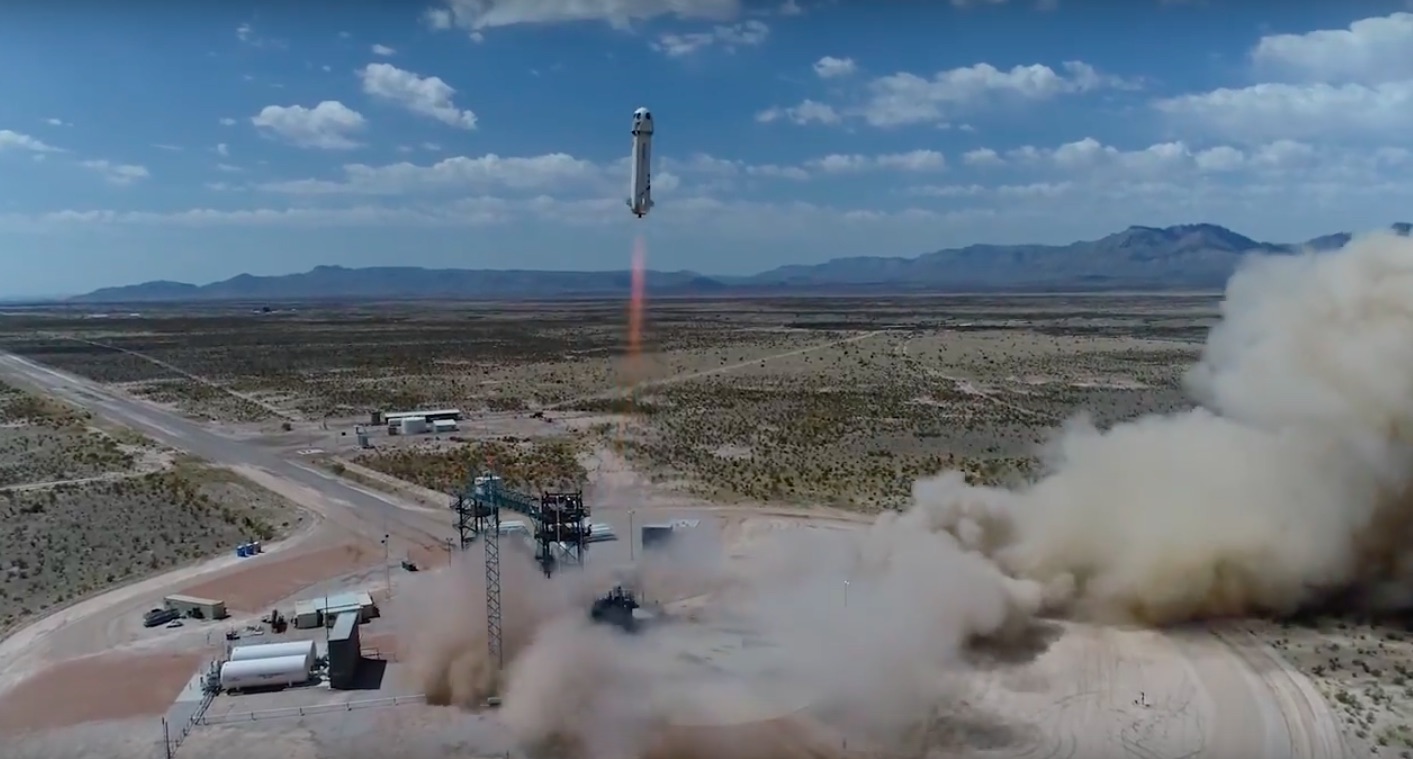Watch Blue Origin's New Shepard Capsule Soar to Space on Latest Test Flight (Video)
Blue Origin's New Shepard suborbital system aced its highest test flight yet over the weekend, and you can re-live the spaceflight action in a new video.
The 1-minute video captures all the highlights of Sunday's (April 29) uncrewed mission, which took off from Blue Origin's West Texas test site.
The New Shepard booster-capsule combo reached a maximum altitude of nearly 66 miles (107 kilometers) during the flight, company representatives said. And then each component came back down to Earth safely, the rocket landing vertically on a designated pad and the capsule gliding down softly under parachutes, throwing up a cloud of dust when it hit the desert floor. The mission officially reached space, flying higher than the 62-mile (100 km) altitude recognized as the boundary between Earth in space. [Flashback: Blue Origin's 1st New Shepard 2.0 Flight in Pictures]
Blue Origin, which is run by Amazon.com founder Jeff Bezos, is developing New Shepard to fly customers and scientific experiments on brief missions to suborbital space. Sunday's flight featured a few science payloads and one (inanimate) passenger — an instrument-laden dummy dubbed Mannequin Skywalker.
Bezos credited the launch to his lucky cowboy boots, which he's shown off before for Blue Origin launches.
"The lucky boots worked again," Bezos wrote on Twitter after the launch. "Huge kudos and thanks to the entire @BlueOrigin team. #GradatimFerociter." Gradatim Ferociter is Latin for Step by Step, Ferociously, Blue Origin's motto.

Sunday's mission marked the eighth suborbital spaceflight for the New Shepard system. The rocket and capsule have aced their landings on all of these flights except the first one, which took place in April 2015. On that mission, the capsule touched down safely, but the booster crashed during its landing attempt.
Get the Space.com Newsletter
Breaking space news, the latest updates on rocket launches, skywatching events and more!
If all continues to go well with the test program, New Shepard could start carrying people to suborbital space and back as early as this year, Blue Origin representatives have said.
Blue Origin is also developing an orbital rocket called New Glenn, which is scheduled to make its launch debut in 2020. The first stage of this booster will be reusable.
Blue Origin's long-term vision involves helping to get millions of people living and working in space. Reusability should slash the cost of spaceflight, potentially making this goal economically feasible in the relatively near term, Bezos has said.
SpaceX founder and CEO Elon Musk is thinking along the same lines. SpaceX lands and re-uses the first stage of its Falcon 9 orbital rocket, and the company is designing its Mars-settling rocket-spaceship combo, known as the BFR, to be reusable as well.
Follow Mike Wall on Twitter @michaeldwall and Google+. Follow us @Spacedotcom, Facebook or Google+. Originally published on Space.com.
Join our Space Forums to keep talking space on the latest missions, night sky and more! And if you have a news tip, correction or comment, let us know at: community@space.com.

Michael Wall is a Senior Space Writer with Space.com and joined the team in 2010. He primarily covers exoplanets, spaceflight and military space, but has been known to dabble in the space art beat. His book about the search for alien life, "Out There," was published on Nov. 13, 2018. Before becoming a science writer, Michael worked as a herpetologist and wildlife biologist. He has a Ph.D. in evolutionary biology from the University of Sydney, Australia, a bachelor's degree from the University of Arizona, and a graduate certificate in science writing from the University of California, Santa Cruz. To find out what his latest project is, you can follow Michael on Twitter.









